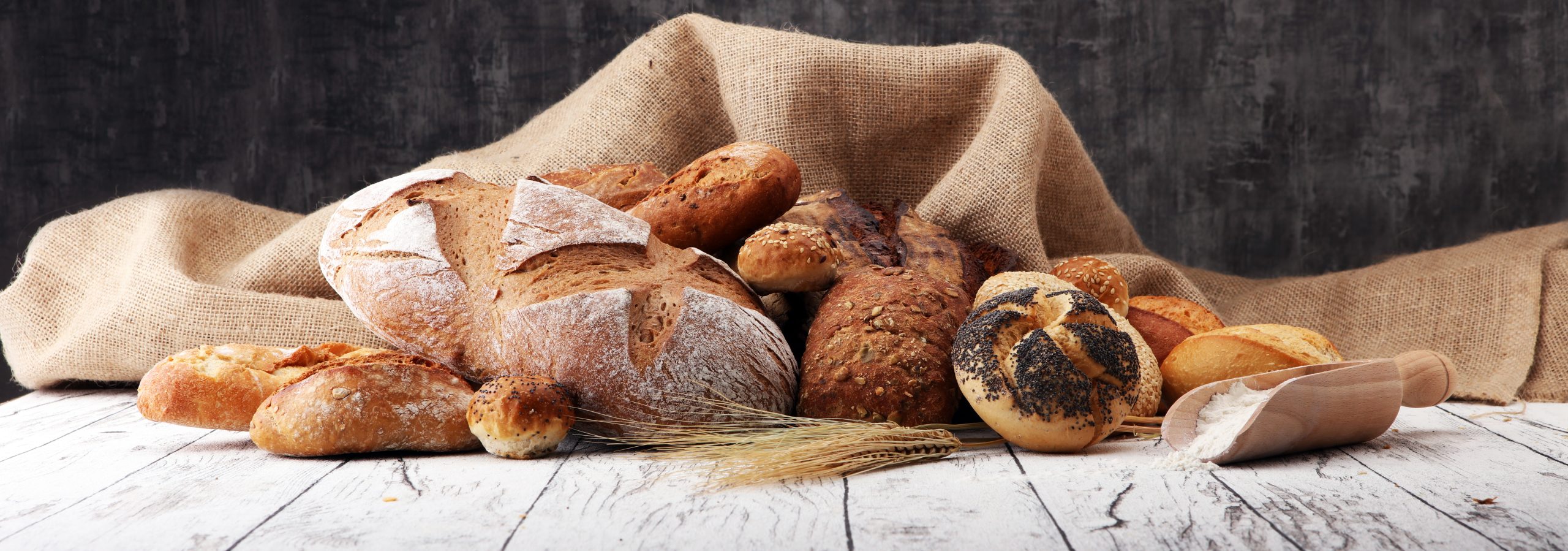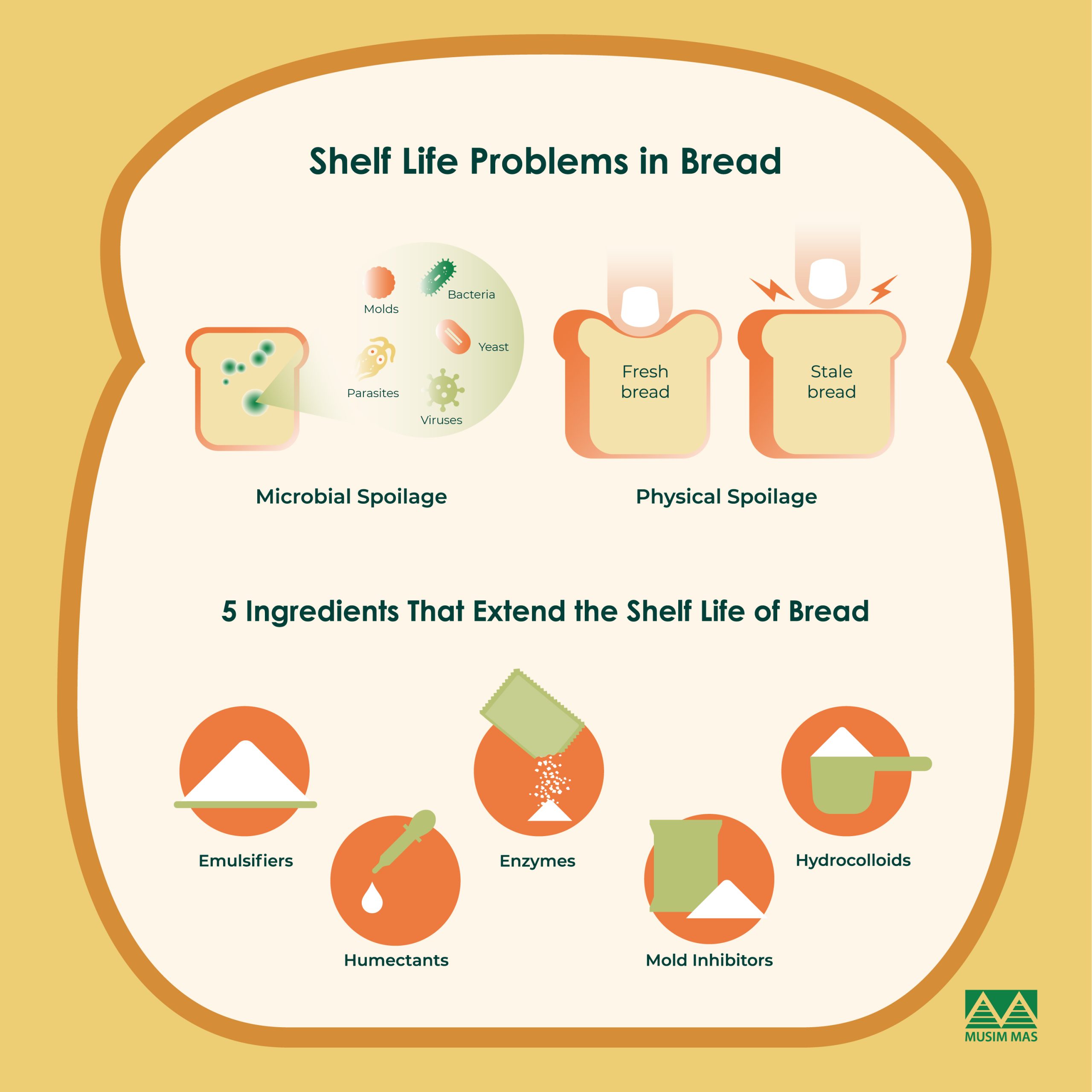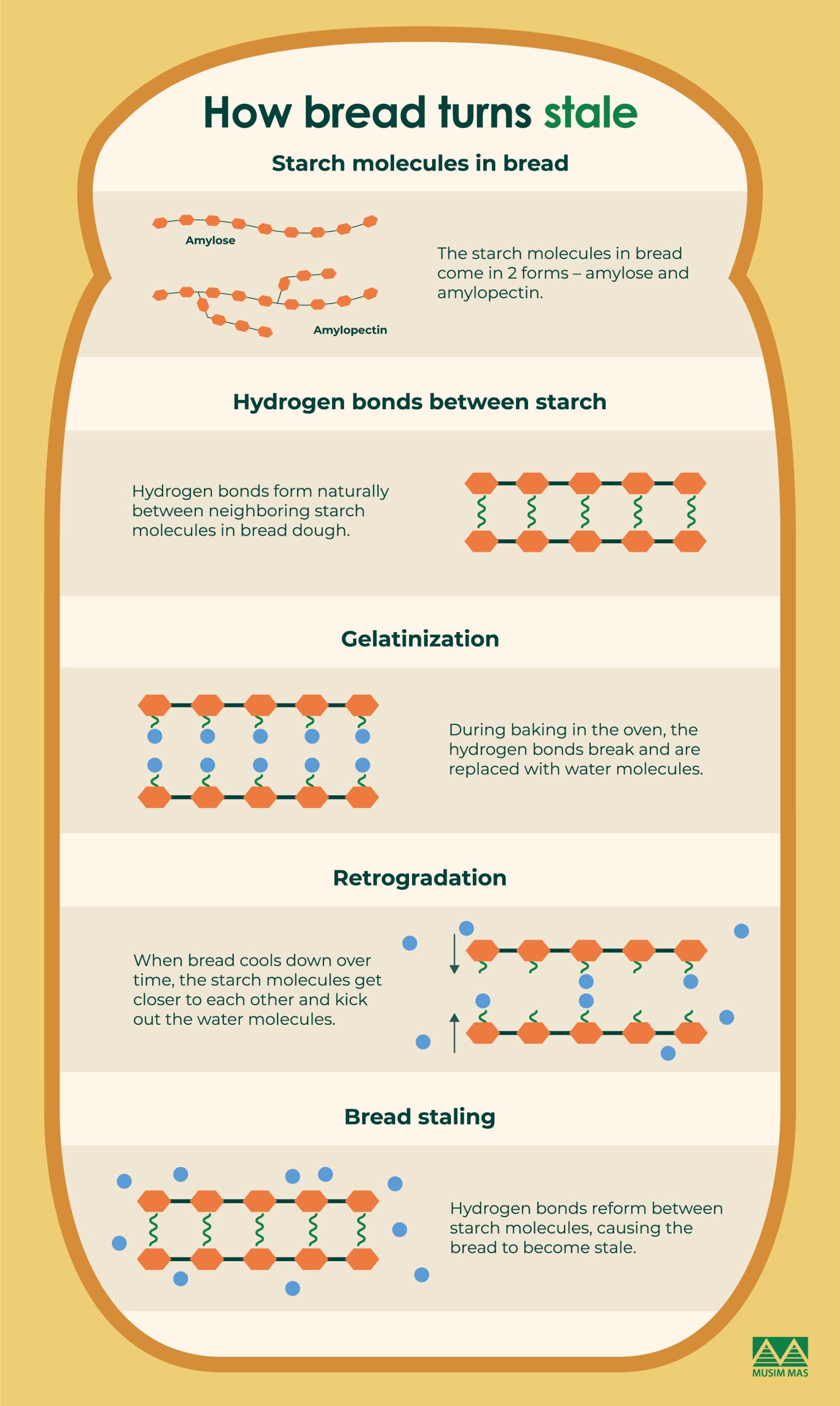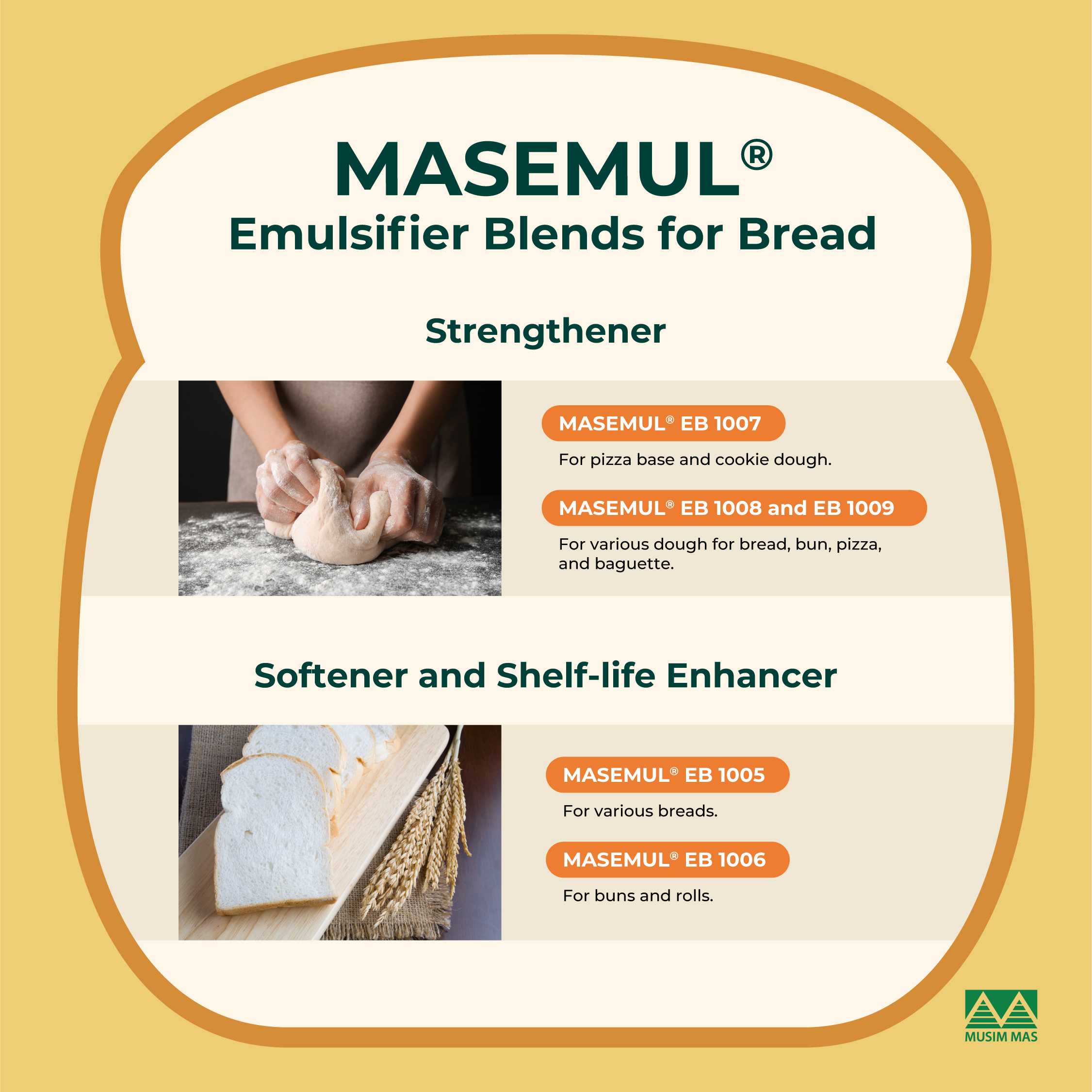By: Yeo Yu Teng
In a world where family sizes are shrinking and bread consumption is stretched across the week, knowing the shelf life of this beloved staple has become increasingly important. How long will it last? This question looms as we seek to balance enjoying freshly baked goodness and avoiding waste.
Many factors can influence the shelf life of bread. This article will help you understand those factors and explains how food science enables industrial bakers to extend the shelf life of bread without compromising on quality.
How long does bread last?
When stored at room temperature, commercially baked bread can last for 2 to 4 days, according to the United States Department of Agriculture [1]. But when refrigerated, bread can last 7 to 14 days. You can also store bread in the freezer for 3 months, although it can be a hassle to pop the frozen bread back into the oven before eating.
Why extend the shelf life of bread?
Bread that’s past its expiration date becomes stale, hard, and less tasty. That’s how you can tell if your bread has gone bad. It’s also more likely to grow mold and rot. Even though some types of mold may be harmless, it’s tricky to determine which kinds are on your bread. That’s why it’s safer not to eat moldy bread. Some molds produce mycotoxins, which are toxic substances that can upset your gastrointestinal tract [2]. Long-term consumption of mycotoxins like aflatoxin could also increase the risk of certain cancers like liver cancer [3].
But suppose bread manufacturers can extend shelf life. In that case, it ensures that even after the relatively lengthy transport and storage time, consumers can still enjoy springy bread days (or sometimes weeks) after it’s baked.
What makes bread go bad?
Bread spoils for two main reasons: microbial spoilage and physical spoilage.
Microbial spoilage is caused by mold, yeast, or bacteria that grows during the packaging or cooling stages after baking. Bread with high water content spoils faster than drier ones, such as sourdough bread.
Physical spoilage happens to the crust and crumb of bread in the form of staling. The crust on fresh bread is dry and crisp but becomes soft and leathery when water migrates from the inner crumb or the crust absorbs moisture from the air. Crumb staling occurs when starch crystallizes, making the crumb firmer and drier.
Here are some ingredients that bread manufacturers add to keep your bread fresh longer.
1. Emulsifiers
How Bread Turns Stale: Explaining the Process Behind Starch Retrogradation
During baking, heat causes the starch granules in the dough to absorb water and swell. This makes the bread spongy and moist. Once out of the oven, the bread begins to cool, and the starch molecules start to retrograde – they rearrange themselves and crystallize to form a network, which also expels the water absorbed during baking. Starch retrogradation is the main reason why bread hardens during storage.
How Emulsifiers Reduce Starch Retrogradation
To prevent this from happening, commercial bakers mix emulsifiers into bread dough. While the primary role of emulsifiers is to help oil and water mix together, they can interact with the starch molecules in the bread.
Emulsifiers bind to a type of starch called amylose, preventing the amylose molecules from forming a gel network among themselves, which would have otherwise contributed to bread staling. Emulsifiers also bind to another type of starch called amylopectin. Although to a lesser extent, it still reduces its crystallization and network formation. By using emulsifiers, we keep the bread softer and more enjoyable to eat, even after it has been stored for some time.
An example is our MASEMUL® EB 1005 emulsifier blend, which functions as a bread texture softener and dough strengthener. It’s a complete solution for bread manufacturers without the need to add additional emulsifiers. The blend improved machinability, bread volume, shape retention, and shelf life.
2. Humectants
Moisture is responsible for the spoilage of many types of food, including bread. Microbial spoilage is more common in bread with a high water activity, which means more water is free or unbounded and thus available for microorganisms to use for growth. Microorganisms like bacteria multiply faster and thrive in a high-moisture environment.
To reduce the water activity in baked goods, bakers may add sugar, honey, or glycerine to their dough. Glycerine, or glycerol, is a sugar alcohol derived from animal or plant fat that functions as a humectant. An example is our MASCEROL® Refined Glycerine derived from plant-based sources like sustainable palm oil.
The natural preservative reduces water activity by attracting and binding free moisture, reducing the amount that’s available for microorganisms to use. The sweet and colorless liquid helps the bread remain soft and springy for longer, increasing its shelf life.
3. Enzymes
Bread bought from grocery stores seems to last forever because they add enzymes, such as amylase, to bread dough. Amylase is an enzyme that naturally occurs in our bodies and many plants.
The enzyme acts like a pair of scissors and cuts the long starch molecule strands into smaller sugar fragments. These simpler fragments don’t crystallize as strongly as starch molecules, helping the bread remain softer for longer. These simple sugars also act as humectants and attract free water, which helps to retain moisture in the bread and slows staling.
4. Mold Inhibitors
Bread is a delicious food but can also be a tasty treat for mold. Mold is a type of fungus that grows on bread when it’s exposed to moisture and warmth. It can make the bread look fuzzy, change its smell, and even produce harmful toxins.
To slow down the growth of mold, bread producers add mold inhibitors to bread. They work by reducing the pH of the bread, creating an acidic environment that slows down the initial growth of mold. Natural mold inhibitors include organic acids like vinegar, raisin juice, and citric acid. Synthetic ones have specific anti-mold properties and target select microorganisms. This includes propionates, with calcium propionate being the most commonly used.
5. Hydrocolloids
Hydrocolloids are ingredients that work wonders to keep bread fresh and delicious for longer. The ones commonly used in bread are agar and carrageenan from seaweed, and cellulose and gum acacia from plants.
These unique substances are non-starchy carbohydrate polymers that attract water. Hydrocolloids can retain moisture in the bread. This is important because moisture plays a crucial role in the freshness and softness of bread. By holding onto water, hydrocolloids help prevent the bread from drying out too quickly, thus maintaining its moistness for longer.
Musim Mas Offers a Wide Range of Emulsifiers for Your Needs
Musim Mas stands as a reliable provider, offering a diverse range of emulsifier blends tailored to meet various application needs.
With the introduction of our cutting-edge emulsifiers, MASEMUL® EB 1008 and EB 1009 DATEM Replacers, we’ve successfully developed cost-effective alternatives to DATEM while preserving essential dough-strengthening properties.
Another example is our MASEMUL® EB 1006, which caters to the demands of bun production, while MASEMUL® EB 1007 caters to the requirements of pizza making.
At Musim Mas, we pride ourselves on fostering close collaboration with our valued customers, enabling us to deliver customized solutions that address their unique challenges. Experience the excellence of our emulsifier blends and unlock new possibilities and innovations in your food production processes with us.
References:
[1] https://ask.usda.gov/s/article/How-long-can-I-store-bread
[2] https://www.ncbi.nlm.nih.gov/pmc/articles/PMC5834427/
[3] https://www.cancer.gov/about-cancer/causes-prevention/risk/substances/aflatoxins












